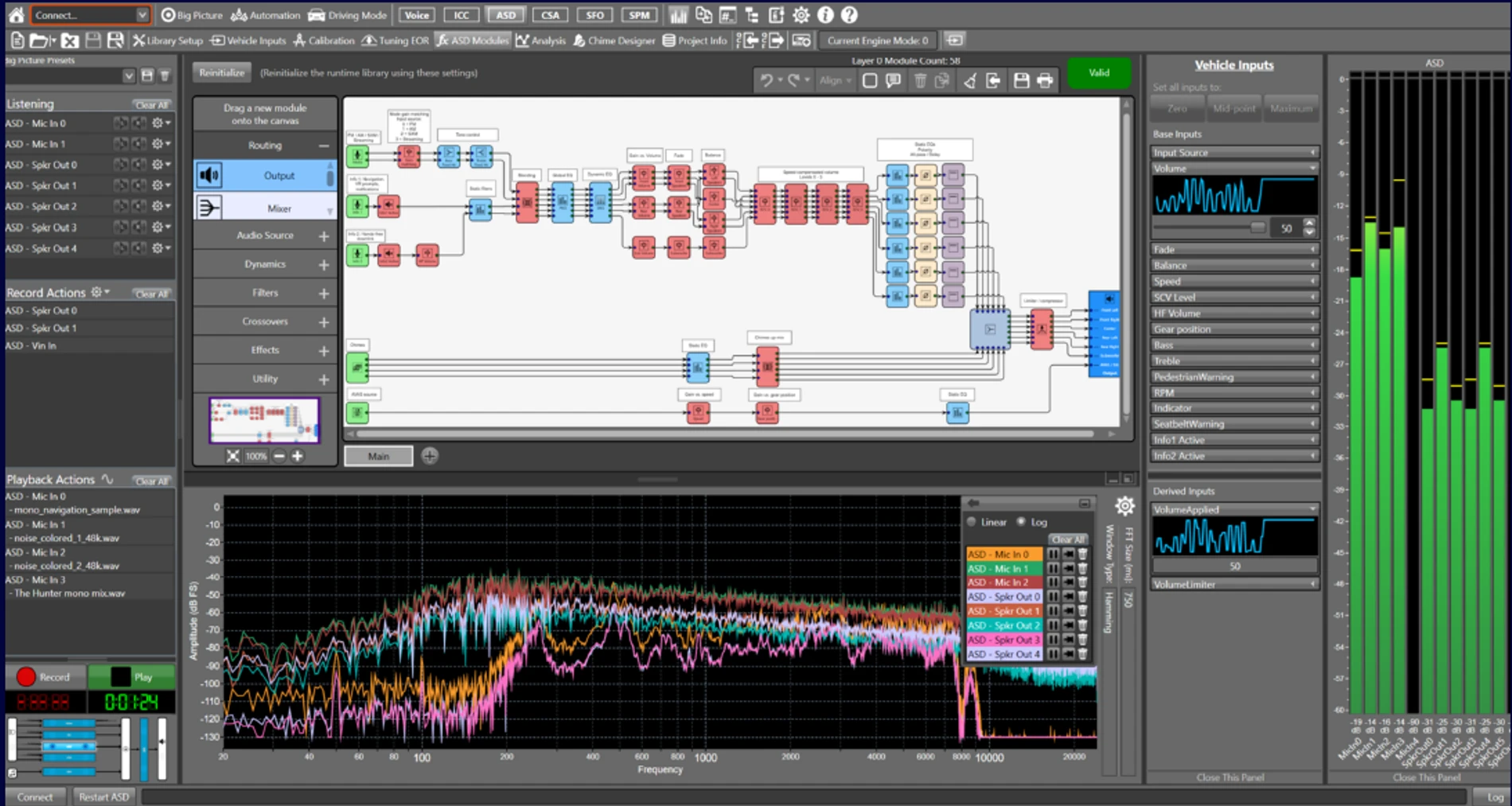At CES 24 today, BlackBerry announced the launch of QNX Sound, an innovative development platform that decouples audio and acoustics software from the vehicle hardware to give audio designers and engineers complete creative freedom to deliver new and exciting in-vehicle sound experiences.
QNX Sound enables automakers to consolidate all audio and acoustic functions seamlessly and cost-effectively within the main software stack of the software-defined vehicle architecture, using pre-integrated and pre-tested core technologies.
This includes a complete out-of-the-box library of automotive acoustics functional modules for telephony, safety alerting, noise reduction, sound enhancement, media playback, etc.
The software foundation not only provides more control over quality and functionality of these services, but it also includes advanced tuning tools with a graphical programming interface that unlocks endless signal processing creativity.
For the first time, this offers an entirely software-driven foundation for automakers to explore new audio-based services and collaborations with technology companies and multimedia content providers to bring new, value-add features into the vehicle, opening new opportunities to create new revenue streams from the activation of optional features – or to upgrades from base audio to a branded premium level – as on-demand or subscription services.

“In the software-defined vehicle age, audio becomes a new playing field for innovation and differentiation,” said John Wall, Senior Vice President, and Head of QNX at BlackBerry.
“QNX Sound is the ultimate digital audio platform for the automotive industry and the most comprehensive foundation available for innovation. Through it, we enable automakers to explore new business opportunities and exciting collaborations that will truly appeal to and excite the end user.”
QNX Sound is the only software-defined audio and acoustics solution for the automotive industry that has been fully tested in production and pre-integrated in next generation System on Chip (SoCs).
The platform is pre-integrated with BlackBerry QNX Real Time Operating System (RTOS) and QNX Hypervisor and includes an audio extension mechanism that allows 3rd party signal processing suppliers to compile and deploy their own c-code algorithms.
Furthermore, it is pre-tested with leading measurement and simulation equipment suppliers and industry open standards, like VirtIO to support sound design, tuning and signal flow design capabilities for exciting new features both in the cloud and, eventually, on hardware targets.



